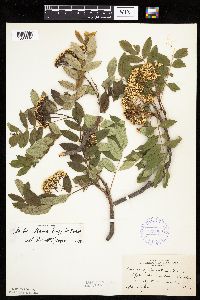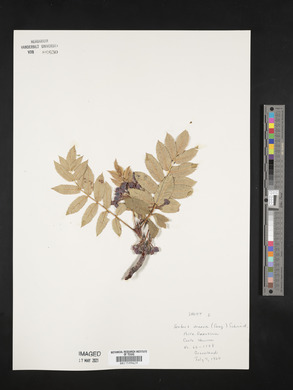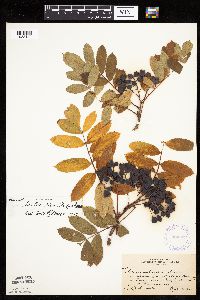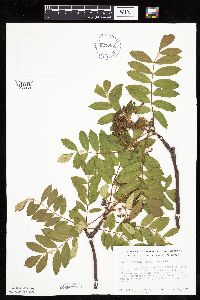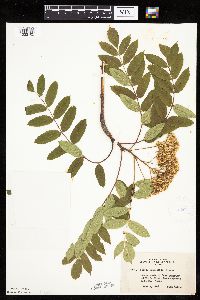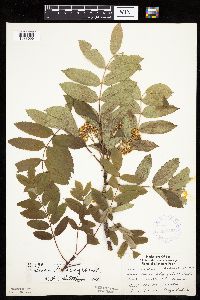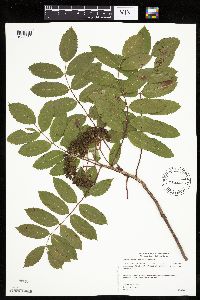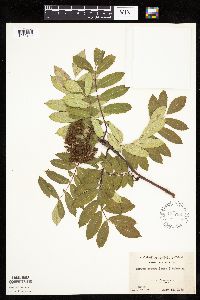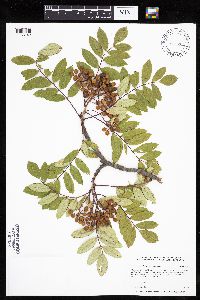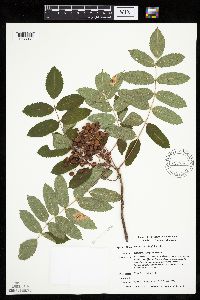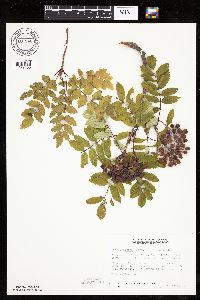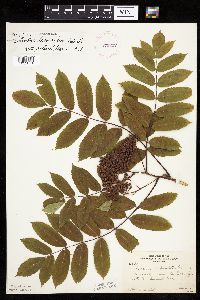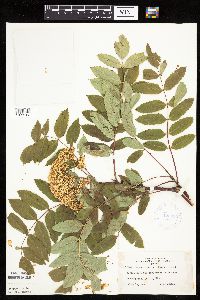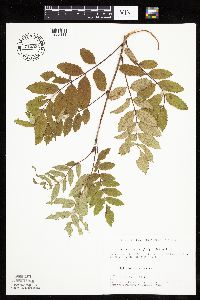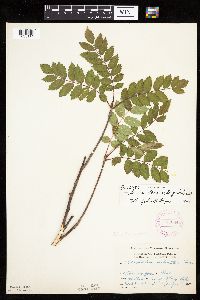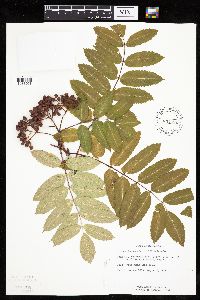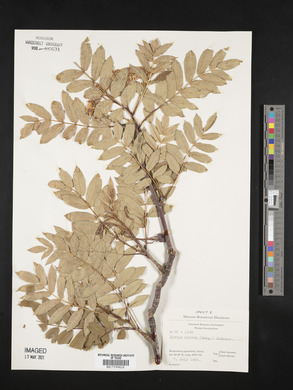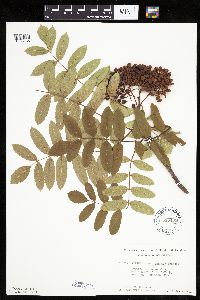Sorbus decora
|
|
|
|
Family: Rosaceae
Northern Mountain-Ash
[Sorbus americana var. groenlandica (Sarg.) Sarg.] |
Shrub or tree to 10 m tall Leaves: alternate, pinnately compound, stalked, with eleven to seventeen leaflets. Flowers: borne on a rather loose, flat-topped inflorescence reaching 6 - 15 cm wide, white, with triangular sepals and five petals 4 - 5 mm long. Fruit: berry-like (pome), orangish red, 7 - 10 mm across, with flattened seeds. Buds: with sticky outer scales and brown hairs along margins of inner scales. Leaflets: dark green above, paler beneath, 3.5 - 8 cm long, elliptic to oblong with a pointed to nearly blunt tip, sharply toothed, sometimes slightly hairy along veins beneath. Similar species: Sorbus aucuparia differs by having buds that are hairy but not sticky, as well as young twigs, lower leaflet surfaces and inflorescence stalks that are hairy. Flowering: May to July Habitat and ecology: Very rare in the Chicago Region, cool woods. Occurence in the Chicago region: native Etymology: Sorbus is the classical name for a plant in the genus. Decora means decorative. Author: The Morton Arboretum Shrub or tree to 10 m; winter-buds glutinous, the principal scales glutinous on the back, the inner usually conspicuously brown-ciliate; lfls oblong or oblong-elliptic, abruptly short-acuminate or merely acute, 3.5-8 cm, (2-)2.5-3(3.5) times as long as wide, sharply serrate, paler and glabrous or sparsely pilose beneath; infl 6-15 cm wide; hypanthium glabrous or very sparsely pilose; pet orbicular, 4-5 mm, about equaling the stamens; fr 7-10 mm thick; 2n=68. Moist or dry, often rocky soil; Lab. to Minn., s. to Conn., N.Y., n. O., n. Ind., and ne. Io. May, June. (Pyrus d.; Sorbus subvestita) Gleason, Henry A. & Cronquist, Arthur J. 1991. Manual of vascular plants of northeastern United States and adjacent Canada. lxxv + 910 pp. ©The New York Botanical Garden. All rights reserved. Used by permission. From Flora of Indiana (1940) by Charles C. Deam The species of American mountain-ash have been poorly understood until the recent synopsis appeared. Our native species resembles Sorbus aucuparia, a European species, which has sparingly escaped in northern Indiana. The European mountain-ash has been reported as only single specimens except Nieuwland and Just (Amer. Midland Nat. 12: 221. 1930) found two colonies of about 20 trees in a woods about 6 miles southwest of South Bend and a single tree in a woods about two and a half miles northeast of Walkerton. The tree at the last station named was about five inches in diameter and approximately 35 feet high. They also report that scattered about the tree were numerous seedlings. Sorbus decora was first found in 1924 by Harold Orahood in a woods about a half mile northwest of Union Mills, La Porte County. The tree he found was 9 and a half inches in circumference at breast height and about 20 feet high. In 1933 I found a tree on the border of a swamp in Pokagon State Park, Steuben County, that was 16 inches in circumference and about 25 feet high. …… Indiana Coefficient of Conservatism: C = 10 Wetland Indicator Status: UPL |

